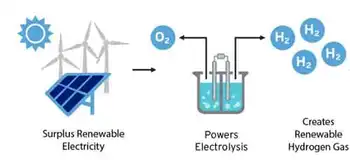DOE hopes seed money helps innovation bloom
By New York Times
Arc Flash Training - CSA Z462 Electrical Safety
Our customized live online or in‑person group training can be delivered to your staff at your location.

- Live Online
- 6 hours Instructor-led
- Group Training Available
A new agency within the department will nurture these and other radical proposals, most of which will probably fail but a few of which could have “a transformative impact,” Energy Secretary Steven Chu said in an interview. The money will go for projects at all stages of development, including some that exist simply as a smart idea, Dr. Chu said.
The department will announce 37 grants totaling $151 million, mostly going to small businesses and educational institutions but also to a few corporations. Some of the ideas may be supported until they are picked up by venture capitalists or major companies, he said.
The new effort, directed by the Advanced Research Projects Agency-Energy, or Arpa-e, is modeled on a Defense Department program known as Darpa that helped commercialize microchips and the Internet and helped develop body armor and other high-tech products. Darpa is known for quick decisions and long-shot bets, an approach seldom associated with the Energy Department.
President George W. Bush signed the agency into law in 2007 but did not propose any money for it. It got its first appropriation in the stimulus act, $400 million to be spent over two years. The Senate confirmed Arun Majumdar, a scientist at the Lawrence Berkeley National Laboratory in California to lead the agency.
Dr. Majumdar said in a telephone interview that his new agency would identify challenges in the energy industry and would finance “five or ten different approaches.”
“We don’t know which ones are going to work, but we’ll try them,” he said, “and if many of them fail but one works, that’s great, we’ve solved the problem.”
Dr. Chu, a Nobel laureate in physics, was a co-author of a 2006 paper for the National Academy of Sciences that called for the creation of the Arpa-e program.
In the initial round, the grants average $4 million. One is going to researchers at the University of Minnesota’s Twin Cities campus who are working on developing an organism that uses sunlight to convert carbon dioxide into sugars and another that converts the sugars to gasoline and diesel. The two can live in a “co-culture” in a thin latex film, according to Lawrence P. Wackett, a professor of biochemistry, although much research remains to be done to make the organisms work as a system.
“A venture capital group might say it’s a little early for them,” Dr. Wackett said.
“It’s not all worked out, but that’s the spirit of Arpa-e,” he said. “It’s not supposed to be things that are 90 percent worked out, but more what-if kinds of things.”
A second grant will go to a group led by the Massachusetts Institute of Technology that is trying to develop an all-liquid metal battery. It could smooth out the intermittent flow of power from sources like wind turbines and solar cells, displacing sources that emit heat-trapping gases like coal, oil or gas.
A third would finance research by United Technologies to use enzymes, which are essentially the digestive juices of living things, to capture carbon dioxide from the stacks of power plants. Existing systems can do the job but consume 30 percent of the power plantÂ’s energy in the process.
Crucial to the new strategy is using top-notch scientists to evaluate the projects, Dr. Chu said. He said that he had written this year to university presidents around the country and asked them to assign their “best and brightest” to the project, and that 500 top scientists had responded. They sifted through 3,600 preliminary proposals and selected 300 to be developed into fuller proposals before choosing 37 to finance in the first round.
With only about 1 percent of the proposals receiving money, Dr. Chu said, the Energy Department might decide to arrange a “fair” at which venture capitalists could size up some of the others.
The Arpa-e grants are part of a flurry of energy announcements by the Obama administration. In a speech in Arcadia, Fla., President Obama plans to discuss $3.4 billion in spending from the stimulus package to improve the electricity grid. White House officials said the government money would be matched by as much as $5 billion in private spending.
In Arcadia, the site of one of the nationÂ’s largest solar panel arrays, Mr. Obama will also highlight the administrationÂ’s commitment to renewable energy sources like the wind and sun, White House officials said. He will also emphasize the importance of upgrading electric transmission systems to improve reliability and reduce energy losses.
The so-called smart grid will include meters for homes and businesses that allow customers to monitor their energy use.











